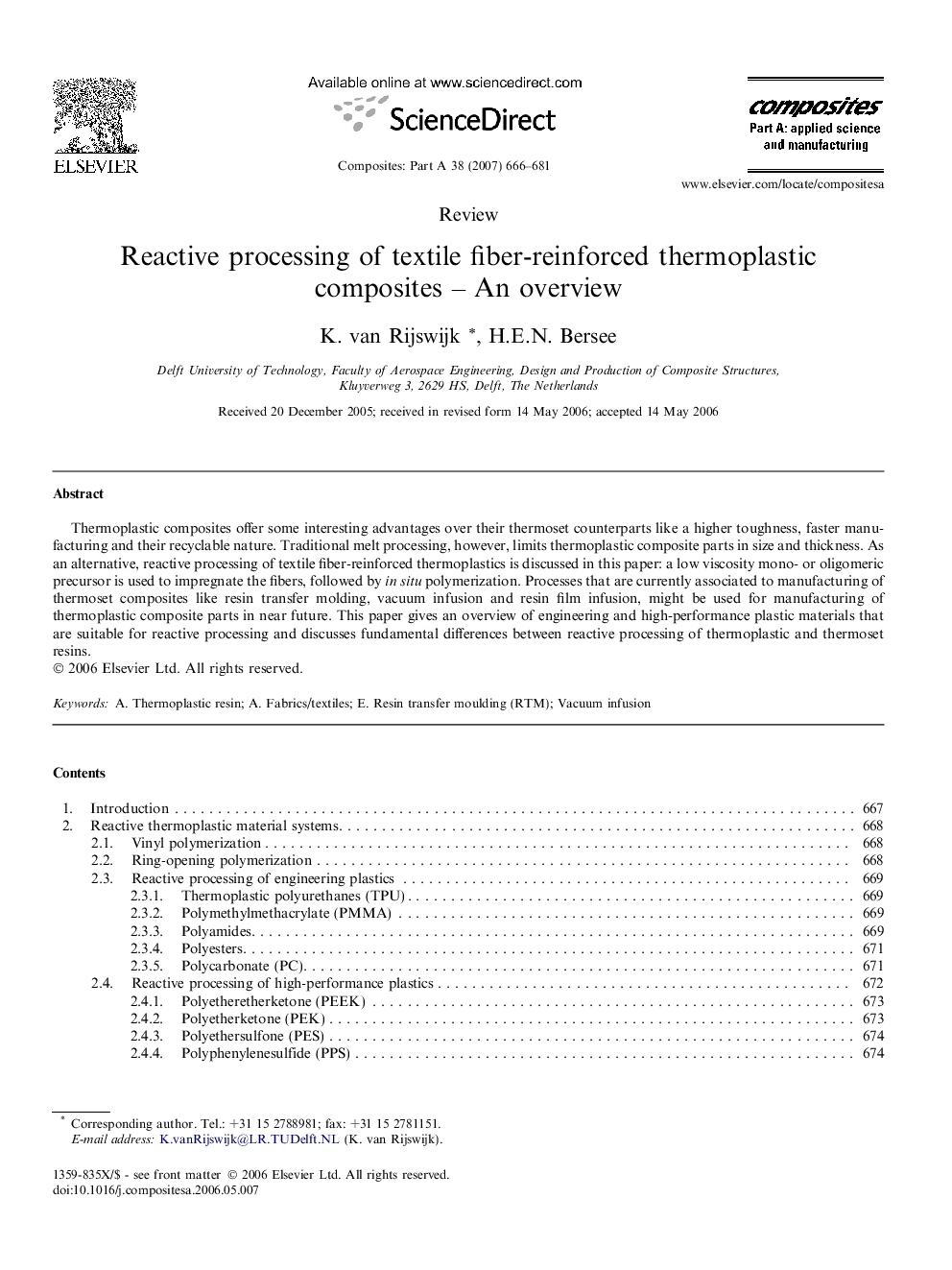| Article ID | Journal | Published Year | Pages | File Type |
|---|---|---|---|---|
| 1467852 | Composites Part A: Applied Science and Manufacturing | 2007 | 16 Pages |
Thermoplastic composites offer some interesting advantages over their thermoset counterparts like a higher toughness, faster manufacturing and their recyclable nature. Traditional melt processing, however, limits thermoplastic composite parts in size and thickness. As an alternative, reactive processing of textile fiber-reinforced thermoplastics is discussed in this paper: a low viscosity mono- or oligomeric precursor is used to impregnate the fibers, followed by in situ polymerization. Processes that are currently associated to manufacturing of thermoset composites like resin transfer molding, vacuum infusion and resin film infusion, might be used for manufacturing of thermoplastic composite parts in near future. This paper gives an overview of engineering and high-performance plastic materials that are suitable for reactive processing and discusses fundamental differences between reactive processing of thermoplastic and thermoset resins.
